Chedworth Roman Villa: Mosaic's age stuns historians
- Published
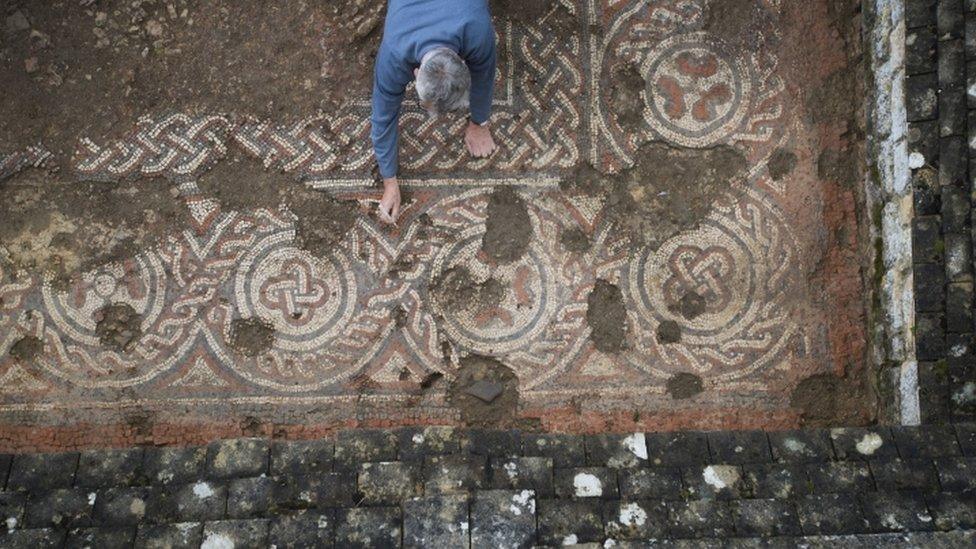
The mosaic's age has shocked experts as it was made after the Roman Empire's rule of Britain
Archaeologists have discovered Britain's first known 5th-Century mosaic at a Roman villa in Gloucestershire.
Radiocarbon dating revealed a mosaic at Chedworth was designed and created in the middle of that century.
This shows sophisticated life continued within the mansion long after Britain ceased to be part of the Roman Empire.
Roman mosaics expert, Stephen Cosh, said: "I am still reeling from the shock of this dating."
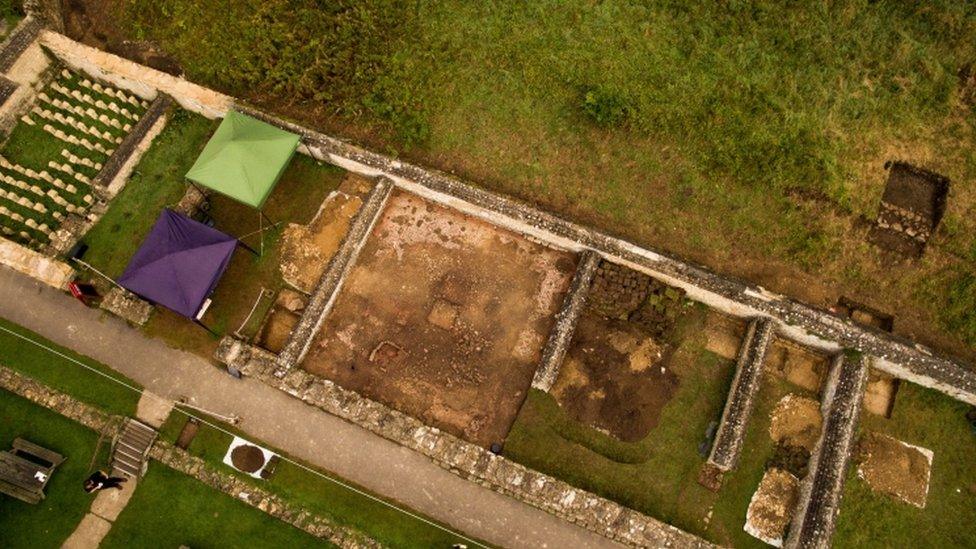
Until now it was believed all Roman villas and towns fell into decay at the end of the fourth century
Mr Cosh, who has written about Roman mosaics, said the find was "tremendously exciting" and of "enormous significance".
"There are very late Roman mosaics in the area for which archaeology can only ever say they must be later than a particular date, without being able to say how much later."
"But none has ever been suspected to be this late," he added.
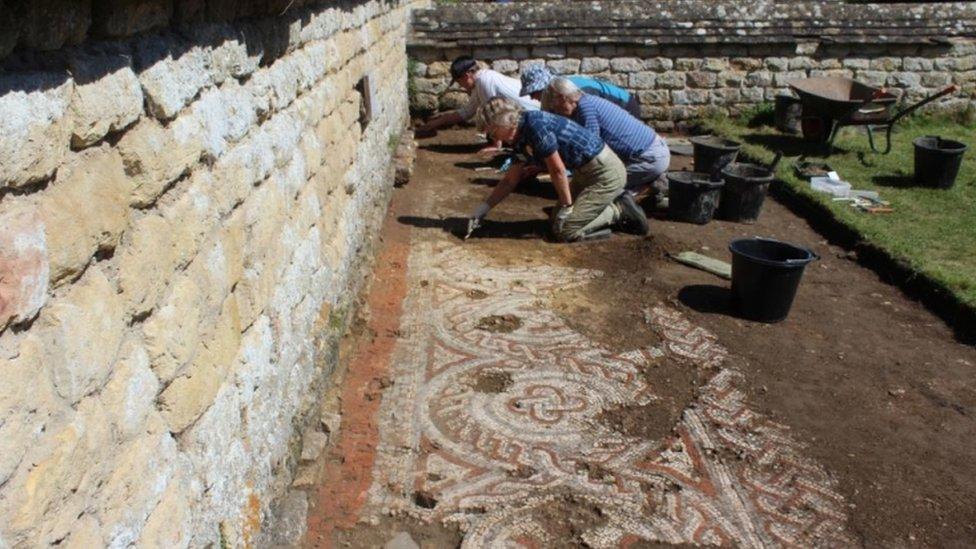
The mosaic was found at Chedworth Roman Villa which is one of the largest in the country
Previously, it had been believed all Roman towns and villas were abandoned and fell into decay at the end of the 4th Century.
Charcoal and bone at Chedworth provided radiocarbon dates that show the recently-discovered mosaic must have been created after 424 AD.
Chedworth Roman Villa is one of the largest in the country and one of the best preserved, with 35 exposed rooms and significant features including fine mosaics.
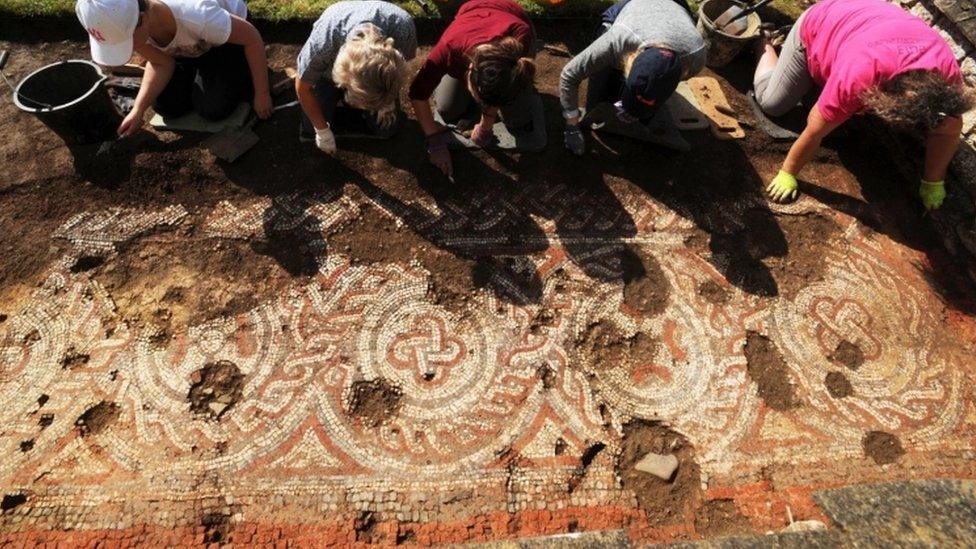
The mosaic has been radio-carbon dated by the archaeology team
National Trust archaeologist Martin Papworth said the 5th Century, often referred to as 'The Dark Ages', marked the beginning of the decline of Roman influence.
"After almost 400 years, Britain had been lost by Rome," he said.
"Units of the regular army and members of the civil service were either being withdrawn or no longer paid in cash."
Production declined and the industries the Romans had became unsustainable, Mr Papworth added.
But the dating and research of the Chedworth mosaic, which has only recently been completed, suggests the decline was more gradual than thought.
In 2012, a six-year programme of archaeological digs and research began at the site.

Follow BBC West on Facebook, external, Twitter, external and Instagram, external. Send your story ideas to: bristol@bbc.co.uk , external
Related topics
- Published11 February 2020
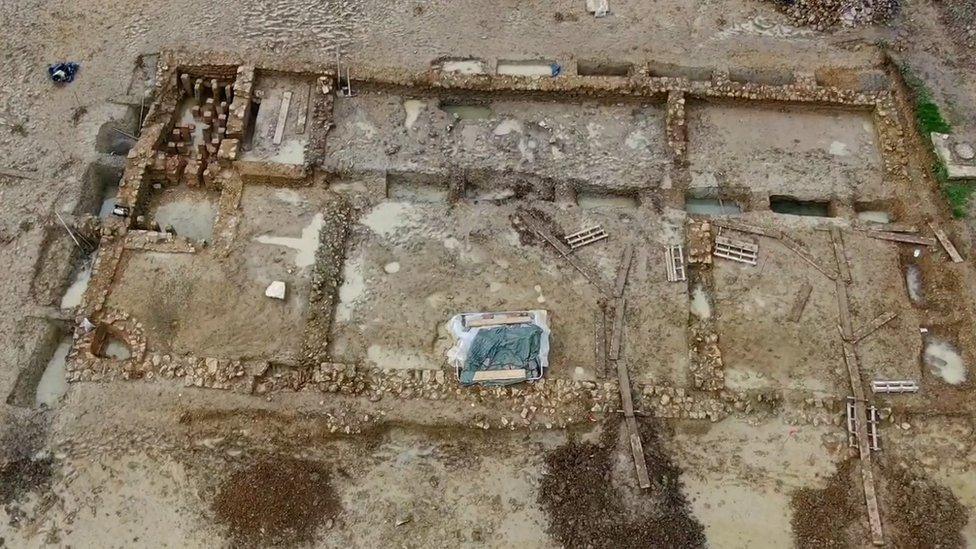
- Published4 February 2020

- Published22 July 2019
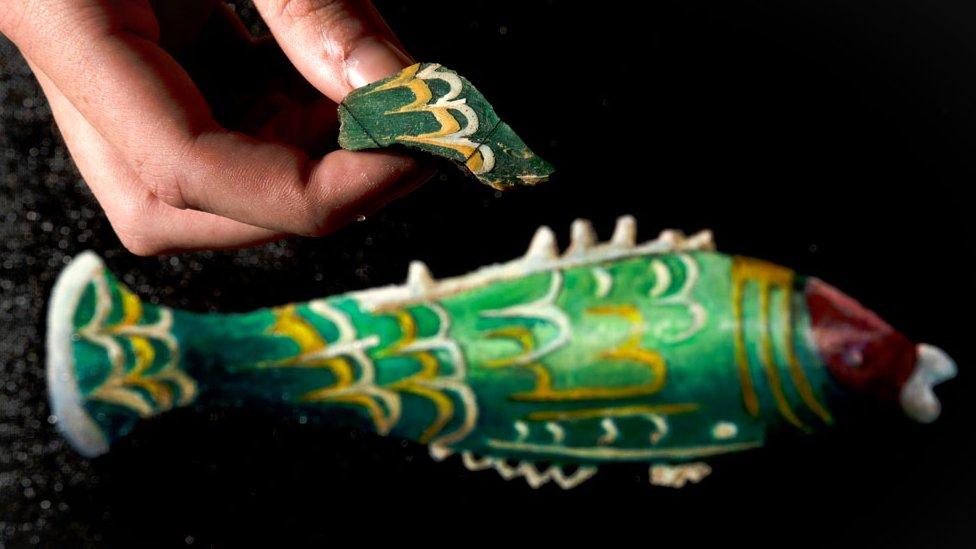
- Published6 June 2016
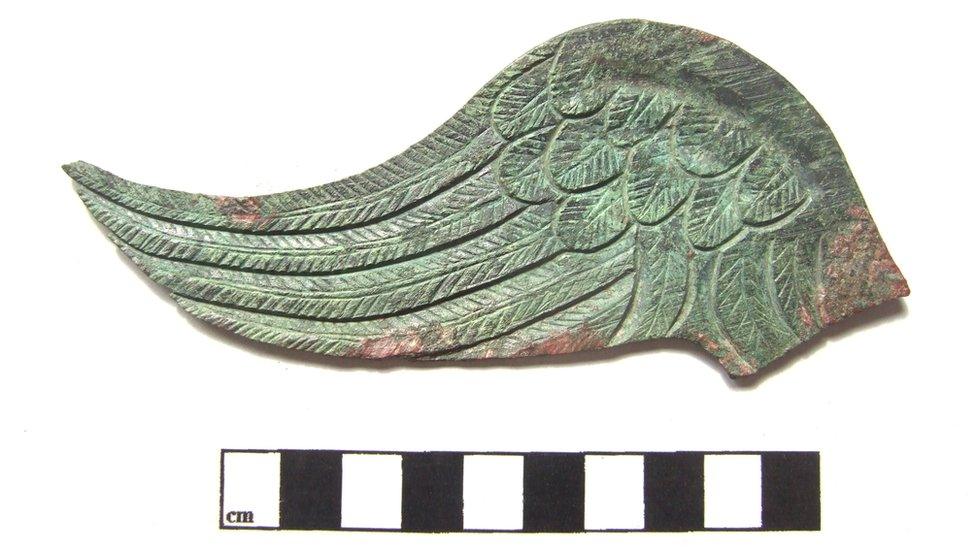
- Published15 August 2016
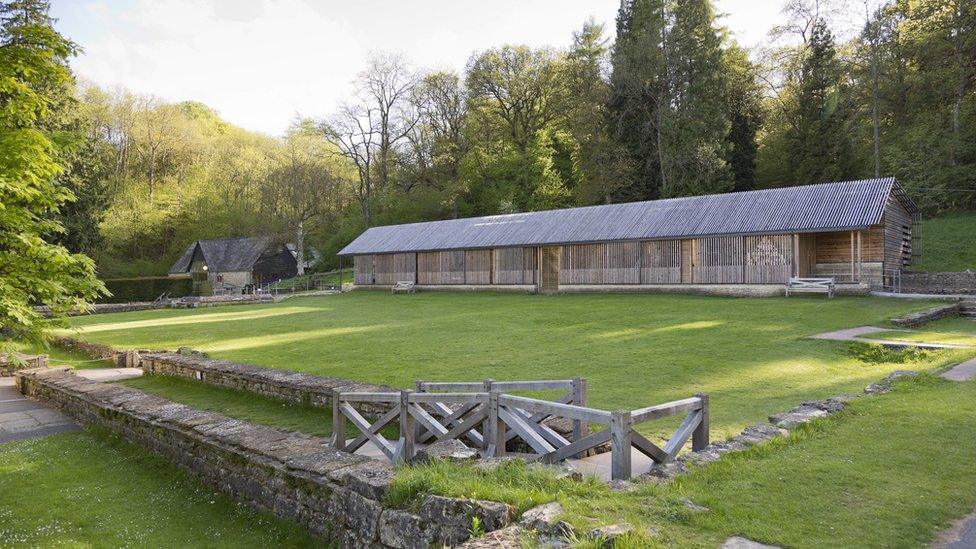
- Published28 August 2013
